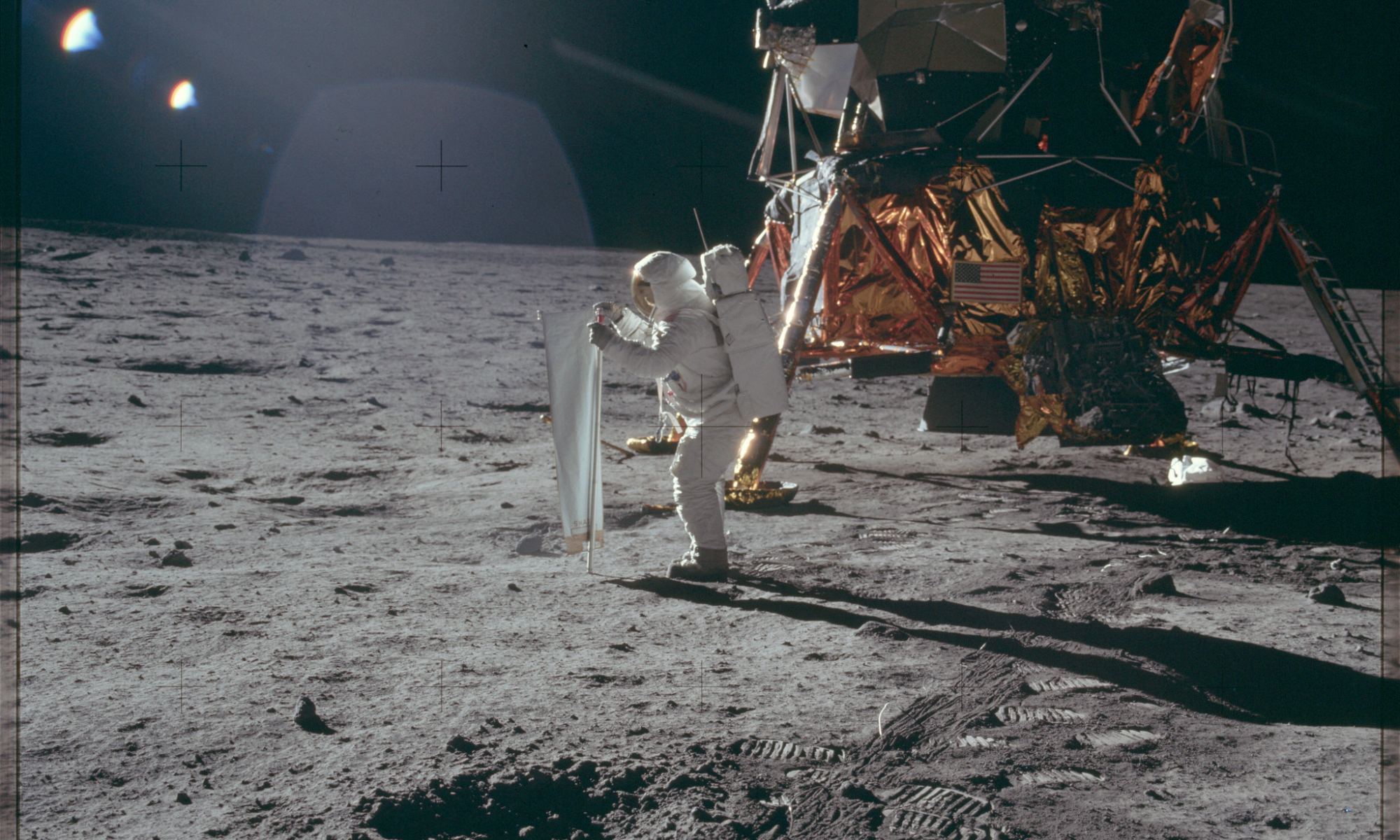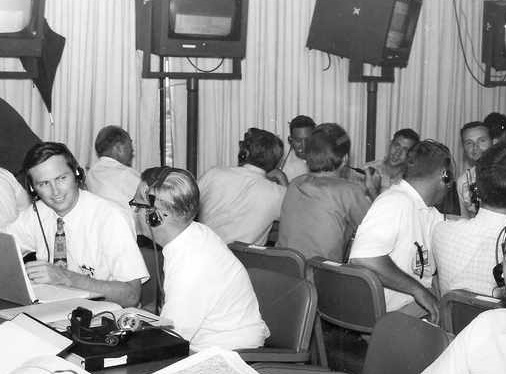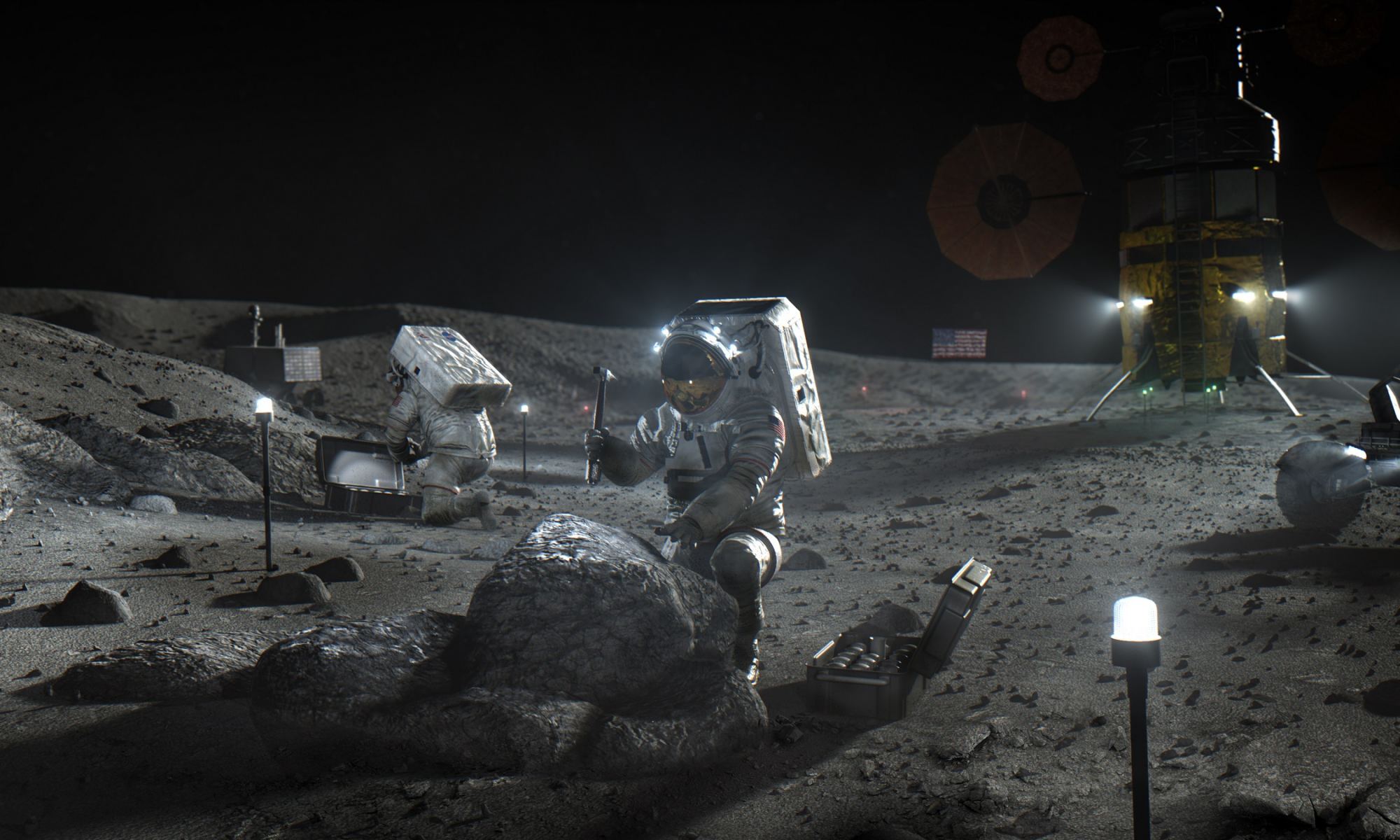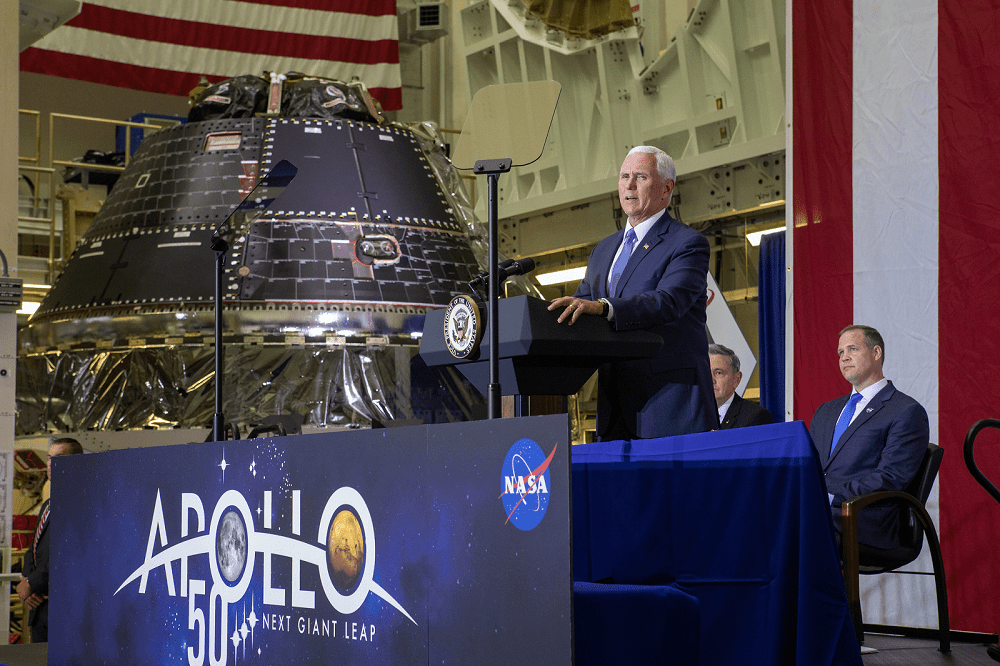Craters are a familiar sight on the lunar surface and indeed on many of the rocky planets in the Solar System. There are other circular features that are picked up on images from orbiters but these pits are thought to be the collapsed roofs of lava tubes. A team of researchers have mapped one of these tubes using radar reflection and created the first 3D map of the tube’s entrance. Places like these could make ideal places to setup research stations, protected from the harsh environment of an alien world.
Continue reading “The Entrance of a Lunar Lava Tube Mapped from Space”China Showcases its Lunar Exploration Plans
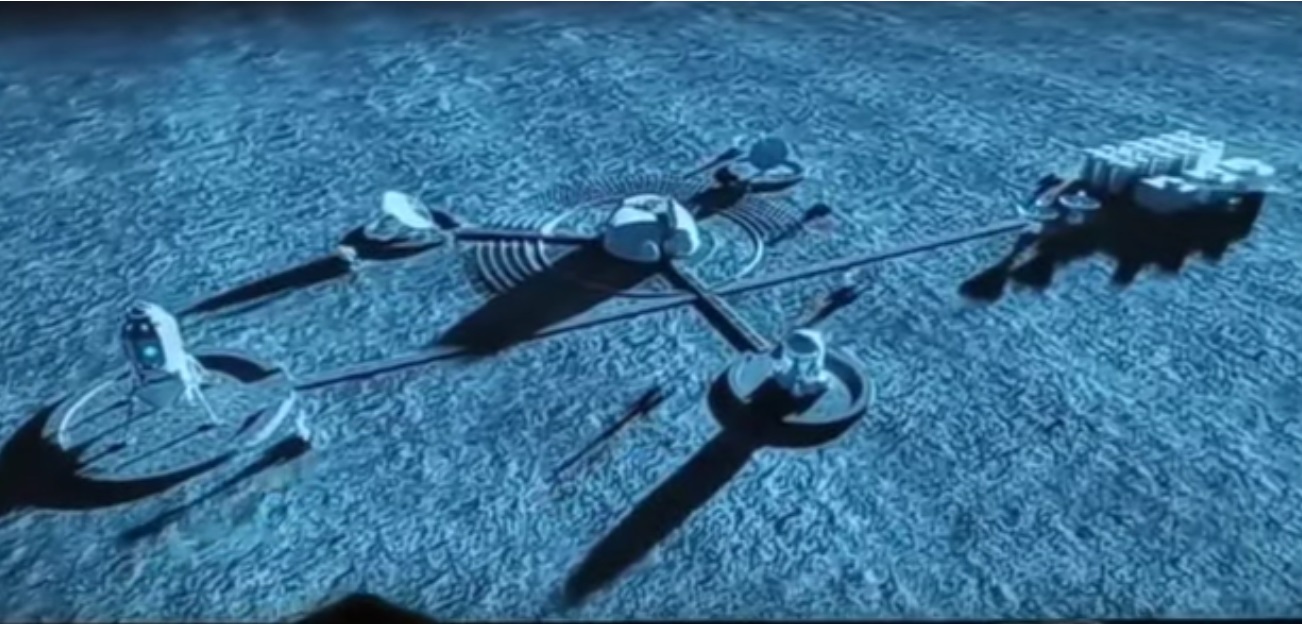
The China National Space Agency (CNSA) has drawn a lot of attention to its space programs in recent years. In addition to their Tiangong space station and crewed missions to Low Earth Orbit (LEO), there’s also been a lot of buzz surrounding the China Manned Space Agency (CMSA) and its Human Lunar Space Program. The high points have included the announcement of the International Lunar Research Station (ILRS) – a joint operation with Roscosmos – and shared concept art for their next-generation spacecraft and lunar lander.
As always, what we know about China’s plans for space exploration is limited to snippets of news, public statements, and the occasional video, which are the direct result of state-controlled media and tight secrecy regarding the country’s space program. The latest is a bootleg video that recently appeared online, which shows a video presentation that provides some insight into China’s long-term plans for crewed lunar exploration. The video is captioned with the words “China’s lunar space station and development of lunar molten cave base plan,” and it certainly lives up to that description!
Continue reading “China Showcases its Lunar Exploration Plans”It’s Time to Figure Out How to Land Large Spacecraft Safely on Other Worlds
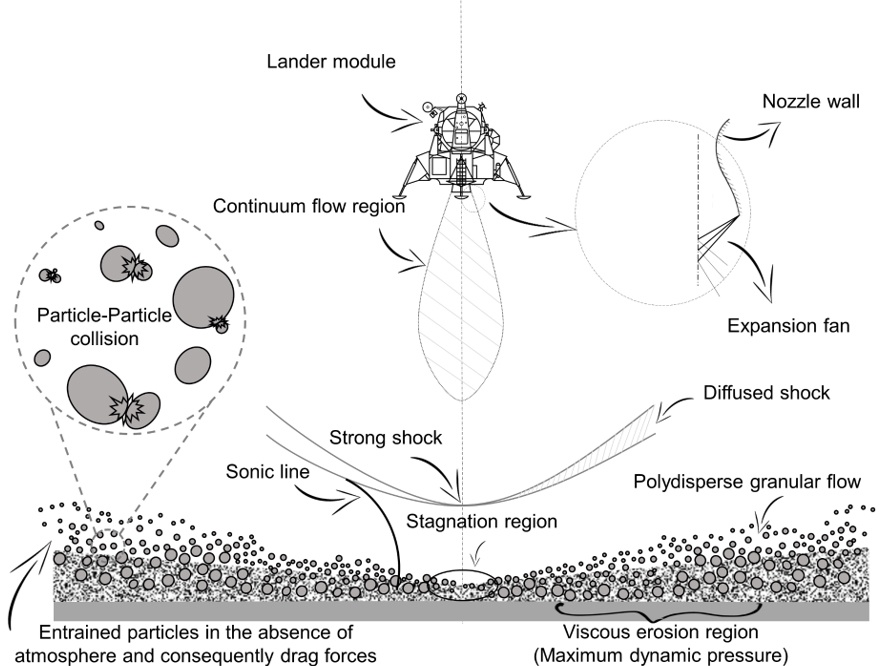
One of the most iconic events in history is Apollo 11 landing on the lunar surface. During the descent, astronauts Neil Armstrong and Edwin “Buzz” Aldrin are heard relaying commands and data back and forth to mission control across 385,000 kilometers (240,000 miles) of outer space as the lunar module “Eagle” slowly inched its way into the history books.
In the final moments before touchdown, Aldrin can be heard saying, “Picking up some dust”, followed by large dust clouds shooting outward from underneath from the spacecraft as the exhaust plumes interacted with the lunar surface, more commonly known as brownout or brownout effect. This significantly reduced the visibility for Armstrong and Aldrin as they landed, and while they successfully touched down on the Moon, future astronauts might not be so lucky.
Continue reading “It’s Time to Figure Out How to Land Large Spacecraft Safely on Other Worlds”Apollo 11 Moon Dust Sells at Auction for a Cool Half Million
A lunar moon dust sample with a strange history made its way to the auction block yesterday.
On July 20, 1969, NASA astronaut Neil Armstrong stepped off the landing pad of the Eagle lunar lander and into history. About eight minutes afterwards, Armstrong performed a crucial task, and collected a small ‘contingency sample’ of the Sea of Tranquility landing site. The sample was a small assurance that, in the event of a hasty departure—due to say, a malfunction or landing site instability—they did indeed still manage to retrieve the very first lunar material for return to Earth.
Continue reading “Apollo 11 Moon Dust Sells at Auction for a Cool Half Million”Remembering NASA Engineer Jerry Woodfill, the Inspiration Behind “13 Things That Saved Apollo 13”
Jerry Woodfill, an engineer who worked diligently behind the scenes during NASA’s Apollo program, has passed away at age 79. Jerry was still employed by the Johnson Space Center (JSC) at the time of his death, working there for over 57 years. Most notably, Jerry worked as the lead engineer behind the Caution and Warning System on the Apollo spacecraft, which alerted astronauts to issues such as Apollo 11’s computer problems during the first Moon landing, and the explosion of Apollo 13’s oxygen tanks.
While continuing his work as an engineer at JSC, Jerry’s infectious enthusiasm for spaceflight led him to also be part of NASA’s public and educational outreach, where he spearheaded programs for children, teachers and adults about science and space flight. He routinely gave over 40 lectures a year, both in person and online to listeners around the world. His unique sense of humor and sometimes unabashed showmanship could hold even the shortest of young attention spans. Jerry usually had his audiences either in stitches or fully captivated by his stories.
Continue reading “Remembering NASA Engineer Jerry Woodfill, the Inspiration Behind “13 Things That Saved Apollo 13””“Put LUCKY on My Tombstone.” Apollo 11 Astronaut Michael Collins Dies at 90
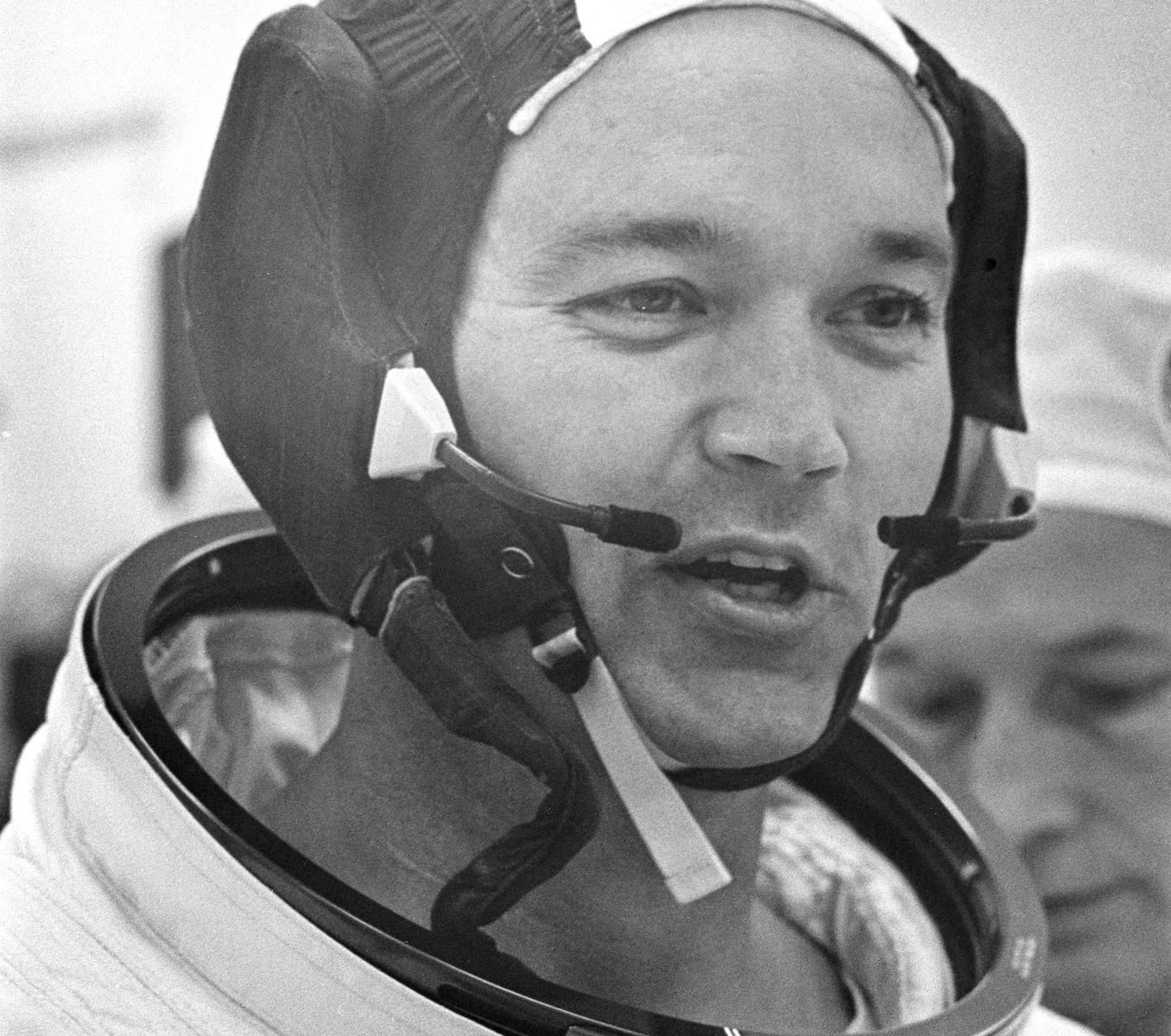
We bid a reluctant but truly fond farewell today to Michael Collins. The NASA astronaut passed away at the age of 90 on April 28, 2021. Collins flew on the historic Apollo 11 mission in 1969, and also on Gemini 10 in 1966.
As Command Module Pilot, Collins was the lone member of the Apollo 11 crew who remained in orbit while his fellow astronauts became the first to land and walk on the Moon. But his endearing nature means he will be most remembered for his wit and humor, his passion and humbleness, his unflappable demeanor, his thoughtful contemplations, and the inspiring words he left behind as a writer of several books.
Continue reading ““Put LUCKY on My Tombstone.” Apollo 11 Astronaut Michael Collins Dies at 90″NASA Proposes the Artemis Accords. The New Rules for Lunar Exploration
As part of Project Artemis, which was announced in May of 2019, NASA will be sending the first woman and the next man to the Moon for the first time since the Apollo Era. To make this happen, NASA has partnered with the private aerospace industry to develop all the necessary systems. At the same time, NASA has entered into collaborative agreements with other space agencies to ensure that lunar exploration is open to all.
To formalize these agreements and ensure that all parties are committed to the same goals, NASA recently drafted a framework for cooperative lunar exploration and development. Known as the Artemis Accords, this series of bilateral agreements (which are grounded in the Outer Space Treaty of 1967) establish common principles for international partners who want to become part of humanity’s long-awaited return to the Moon.
Continue reading “NASA Proposes the Artemis Accords. The New Rules for Lunar Exploration”Here’s a Deepfake of Nixon Giving a Eulogy for the Apollo 11 Astronauts if Their Mission Failed
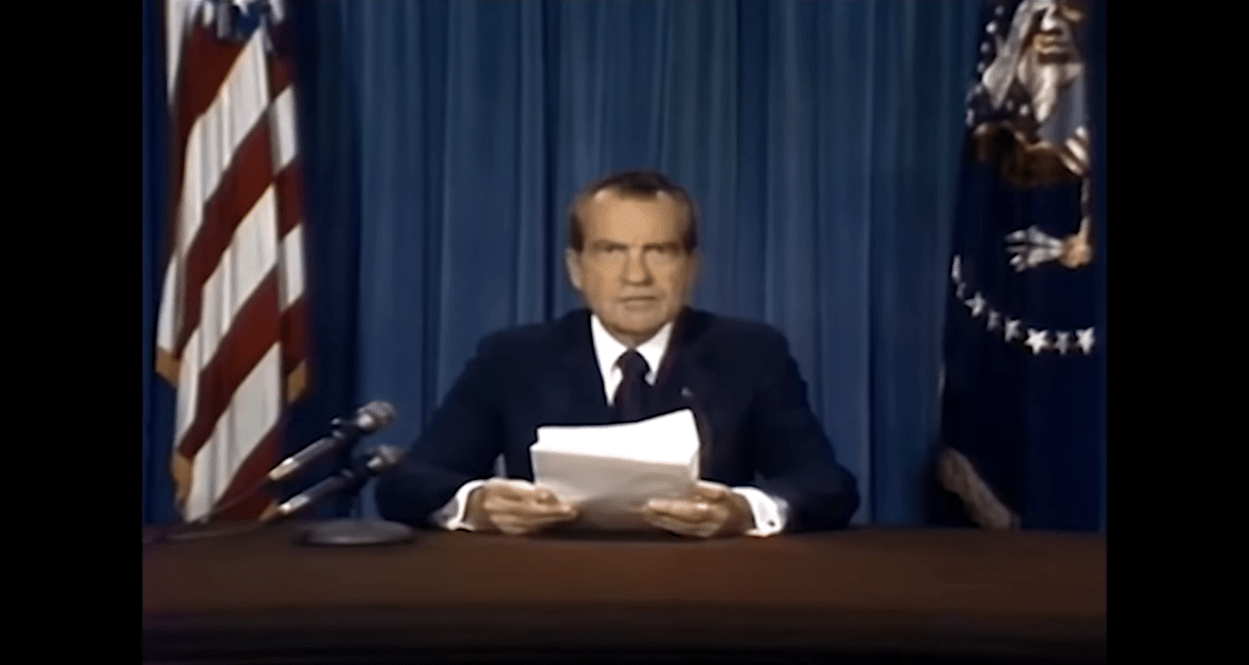
It’s July 16th, 1969. The Apollo 11 crew have completed their training, and they’re in the Columbia Command Module atop a Saturn V rocket, to this day the most powerful rocket ever built. At 9:32 EDT the rocket lifts off, delivering the crew into Earth orbit 12 minutes after launch.
Continue reading “Here’s a Deepfake of Nixon Giving a Eulogy for the Apollo 11 Astronauts if Their Mission Failed”The Story of the Apollo Guidance Computer, Part 3
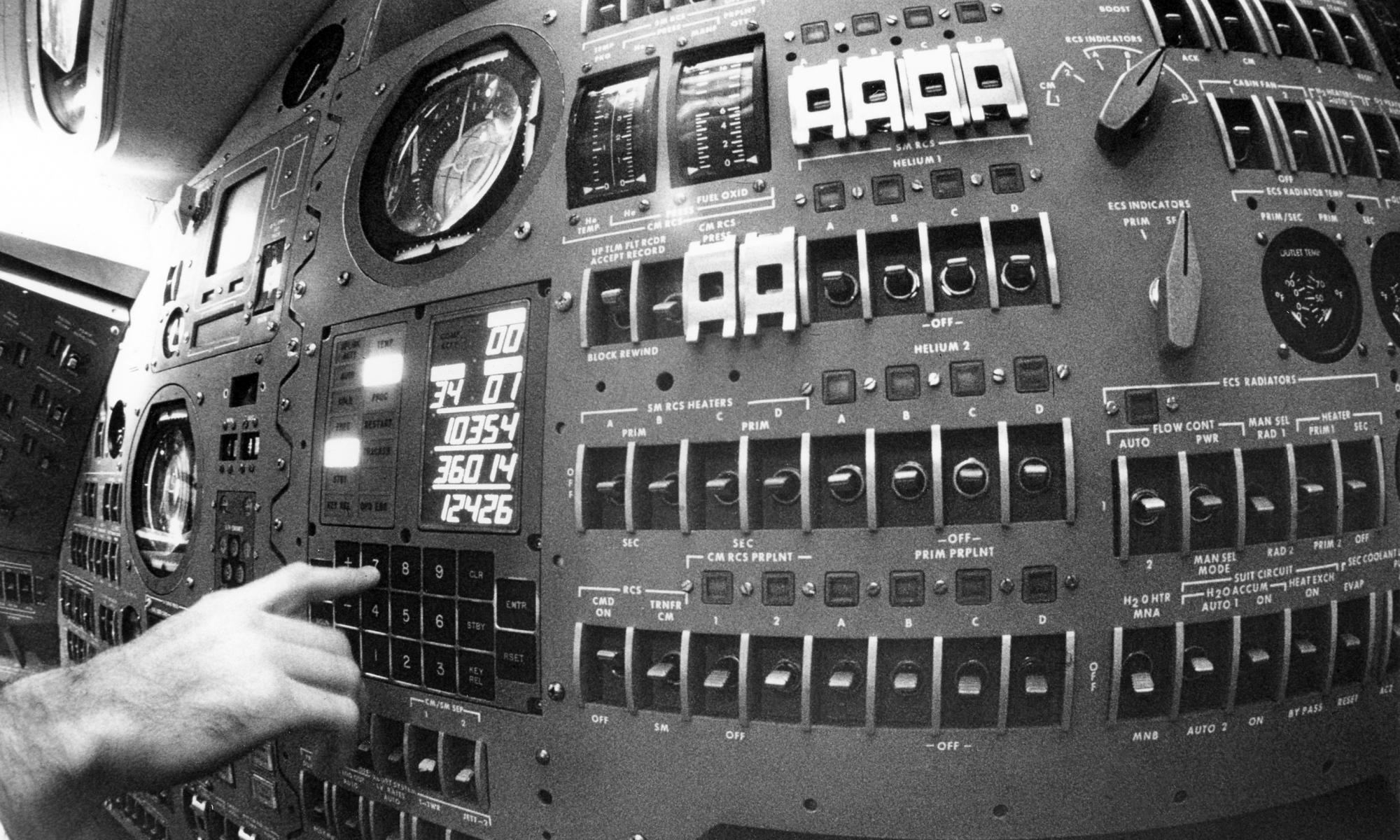
During the development of the Apollo Guidance Computer (AGC) by the MIT Instrumentation Laboratory (see Part 1 and Part 2 for the complete backstory), an inauspicious event occurred sometime during 1965-1966, while the Gemini missions were going on.
The Gemini program helped NASA get ready for the Apollo Moon landings missions by testing out rendezvous and other critical techniques and technologies. Ten crews flew missions in Earth orbit on the two-person Gemini spacecraft.
Continue reading “The Story of the Apollo Guidance Computer, Part 3”VP Pence Unveils the Spacecraft that will Take Astronauts Back to the Moon in 2024!
In accordance with Space Policy Directive-1 – which was issued on December 11th, 2017 – NASA is busy developing all the necessary hardware to return astronauts to the Moon. On March 26th, 2019, NASA was officially directed to expedite the process and land the first astronauts of the post-Apollo era around the lunar South Pole by 2024. This mission is named Project Artemis, who is the twin sister of Apollo in Greek mythology.
Over the weekend, Vice President Mike Pence visited the Neil Armstrong Operations and Checkout Building at NASA’s Kennedy Space Center in Florida to commemorate the 50th anniversary of the Apollo 11 Moon Landing. The occasion also saw the unveiling of the Orion crew capsule that will be used for the first Artemis lunar mission. The event, therefore, served as both a retrospective and a look at the future of lunar exploration.
Continue reading “VP Pence Unveils the Spacecraft that will Take Astronauts Back to the Moon in 2024!”

